LAB PRACTICAL BIS 2C
1/156
There's no tags or description
Looks like no tags are added yet.
Name | Mastery | Learn | Test | Matching | Spaced |
|---|
No study sessions yet.
157 Terms
Eudicot
Webbed venation on leaves
Monocot
parallel leaf veination
Cladograms
only show the pattern of lineage splitting, the lengths of the branches have no meaning
have segmentation
arthropods, analida ( earth worms) and chordata (vertebra
Phylograms
show the pattern of lienage splitting and the proportion of genetic change on each branch, the length of the branches on phylograms varies and they’re typically accompanied by a scal bar proportional to the amount of genetic change. The longer a branch is on a phylogram the more divergent taxa are from each other
Chronograms
show the pattern of lineage splitting associated with specifci (absolute) geologic times often presented in millions of years ago
ancestral
a character state present in teh MRCA of a group node
derived
any state that evolved after the MRCA of a group
homology
similarity in characteristics among organisms that is due to shared ancestry
Convergent Evolution (Homoplasies)
Characters that appear similar but aren’t from close relatives
parsimony
finding the tree with the fewest number of character changes
Polytomies
used to reflect the uncertainty when phylogeneticits don’t always have sufficient data to resolve relationships among a set of taxa
Parsimony- uninformative
characters give us the same number of steps regardless of the tree
Invariant Characters
also uninformative because they are uniform across the taxa
Congruent
if there’s a common branching pattern
Bacteria
essential to nitrogen cycling
Living organisms are separated into 3 domains
Bacteria Archaea and Eukarya
Bacteria and Archaea are often collectively reffered to as
prokaryotes because they lack a nucleus but they’re not each other’s closest relatives
Eukaryotes
House their genetic material within a nucleus and have membrane-bound organelles such as mitochondria and chloroplasts (includes all of the plants and animals most familiar)
Asgard Archaea
sister group of eukaryotes which were discovered near deep sea
Coccus form
a sphere
bacillus form
Rod-shaped
Helical or spiral form
elongate spiral
flagella
thread-like structure that enables the bacteria to swim
binary fission
bacteria dividing asexually to make clones
Phototrophy
energy captured from light
Chemotrophy
energy taken from chemical reactions
Lithotrophs
organisms that use inorganic electron donors like hydrogen sulfide
Organotrophs
Organisms that use organic electron donors such as methane
Autotrophs
Organisms that utilize inorganic carbon like CO2
Heterotrophs
organisms that take carbon from organic sources such as sugars
LGT Lateral gene transfer
bacteria and archaea mic DNA from different lineages to create new variants, LGT is unidirectional DNA moves from one organisms to another. LGT involves usually small portions fo a genome and can occur across vast evolutionary distances
LUCA
Last universal common ancestor
Microbial eukaryotes
have a nucleus, mitochondria, and a cytoskeleton and cause multiple human diseases such as malaria, sleeping sickness, Chagas disease, and leishmaniasis, show a great diversity of body forms include eukaryotic lineages outside of Plantae and Opisthokonts
Ciliate form
(in microbial eukaryotes) has numerous short cilia in rows across the cell surface,are capable fo very rapid movement and often use their cilia
Amoeba from
(in microbial eukaryotes) has an irregular shape and moves by cytoplasmic streaming using pseudopodia referred to as amoeboid and is typically slow
Flagellate Form
(microbial eukaryote form not homologous with bacterial flagellum) flexible rod with a central core of microtubules , long and whip like (a sperm cell)
Ciliate Movement
(eukaryotic) has the same internal structure as a flagellum but is much shorter they line fallopian tubes moving the egg toward the uterus
Phagocytosis
solid food particles are taken directly into the cell
Endosymbiotic theory
eukaryotic organelles could be the products of a symbiosis between bacteria and a eukaryotic cell,both the mitochondrion and the chloroplast arose one time in the evolution of eukaryotes
Naegleria gruberi
microbial Eukaryote that has the unusual ability of being able to change its body from amoeboid to flagellate and back again
Slime mold
distant relatives of fungi have highly motile amoeboid body form that ingests food by endocytosis
Embryophytes
Waxy cuticle, alternation of generations, multicellular gametangia, unbranched sporophyte with sporangium, multicellular embryo (Msoss, Hornworts, Liverworts)
Tracheophytes
Vascular tissue (xylem and phloem), tracheids, apical meristem, reduced gametophyte, dominate branched sporophyte (Lycophytes)
Lycophytes
have mycrophylls, Lycopodium, and Selaginella
Euphyllophytes
Chloroplast DNA inversion, megaphylls includes Monilophytes
Monliophytes
Equisetum (Horsetails) Psilotum, and ferns
Seed Plants
integument, ovule, seeds, pollen with pollen tube, heterospory, bifacial vascular cambium (BVC) Includes Gymnosperms
Gymnosperms
Cycad, Ginkgo, Gnetophytes, and Conifers
Angiosperms
Endosperm, double fertilization, carpel, fruit, vessel elements Includes basal angiosperms, Monocots and Eudicots
Fertilization
fusion of sperm and egg to make a diploid zygote (unicelluar)
Diplontic life cycle
adult stage is multicellular and diploid developed from zygote through mitosis, gametes (sperm and egg) are unicellular and haploid and are produced by meiosis,
Haplontic Life Cycle
haploid adult and lacks a multicellular diploid stage, if gametes are produced they’re haploid and produced by mitosis, once fertilization occurs becomes a zygote and undergoes meiosis to form unicellular haploid spores, spored divide mitotically to grow into a multicellular haploid adult stage, (occurs in algae and fungi but not land plants)
Alternation of Generations
in land plant, elements of diplontic and haplontic life cycles combines. Both a multicellular, diploid adult stage and a multicellular haploid adult stage, sporophyte multicellular diploid stage produces spores and the multicellular haploid stage produces gametes is gametophyte
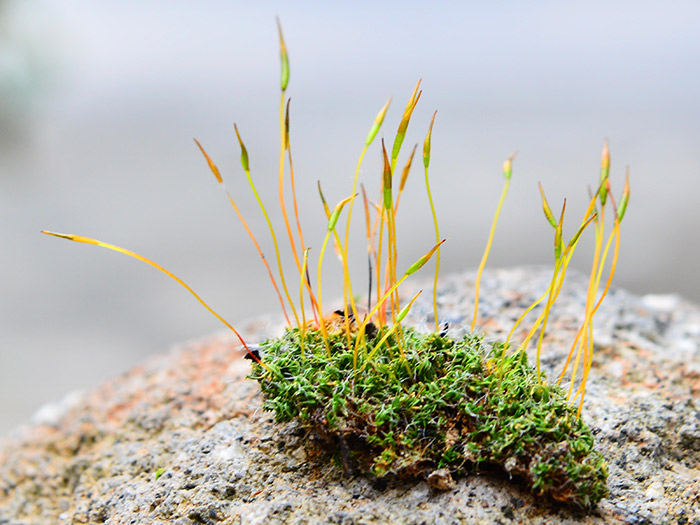
Moss. (Bryophyte) dominant green part of the plant is the gametophyte (haploid so sperm and egg are produced by mitosis), the sporophyte is smaller brown and attached don’t have pollen or seeds only produce a single type of spore, non-vascular plants small and only grow a few cm in height
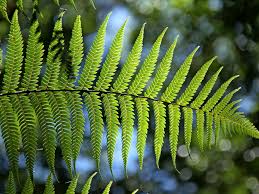
Fern(Monilophyte) sporophyte and gametophyte are separated from each other free-living and nutritionally independent dominant sporophyte. Has sporangia on their bottom surfaces called sori
apical meristems
merisematic cells that allows plants to accomplish growth and regenerate damaged parts of plants body
Diffusion
process that provides resources such as oxygen and water to single-celled and small multicellular organisms
Vascular System
the way large multicellular organisms distribute resources to different parts of their. bodies composed of phloem and xylem
Phloem
tissue that conducts the products of photosynthesis (sugars) from sites of production (leaves) located on outside
Xylem
tissue type that conducts eater and minerals from the soil to the aerial parts of the plant is located on inside
Tracheids
type of xylem tissue shared by all vascular plants, provide an efficient method of water and mineral transport to plants and important fro structural support,
Bifacial vascular cambium (BVC)
a way to produce more vascular tissue and wider stems in plants (produces rings in tree)
Bryophytes
non-vascular plants,liverworts, mosses and hornworts earliest diverging land plants, paraphyletic group, associated with cool moist environments, gametophyte forms the dominant part of the body
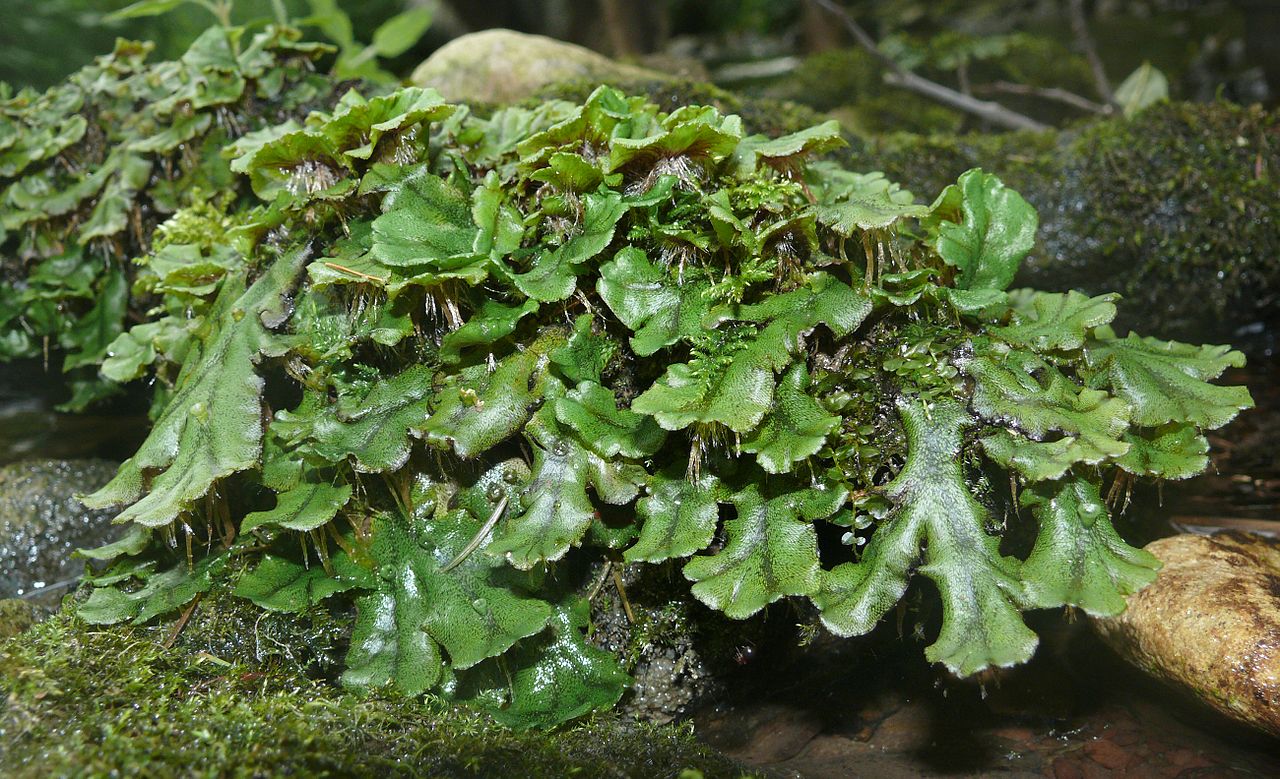
Liverworts -thallose body form Byrophyte, have watery extensions that grow out of the thallus that bear gametangia, once fertilized, the egg grows into multicellular sporophyte

Hornworts- Bryophyte, smaller circular and thinner body often appear blue green due to symbiotic cyanobacteria, zygote grows into an elongate pointed sporophyte that has a meristem at its base and has indeterminate growth, sporophyte is persistently green which is capable of its own photosynthesis
Lycophytes
(quill worts, spike mosses, and club mosses) oldest group of vascular plants relatively small, sporophyte dominant, have small gametophytes that live independent of sporophyte, their leaves possess only a single strand of vascular tissue (microphylls), has heterospory (2 sizes of spores)
Monilophytes
(horsetails, whisk ferns and ferns)sporophyte dominant, have relatively small gametophytes that live independent of the sporophyte, has a homosporous alternation of generations life cycle
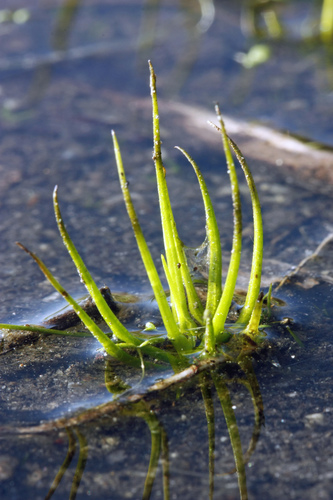
Quillworts- Lycophytes live in aquaati areas, spiny leaves have a single strand of vascular tissue produces two sizs of spores
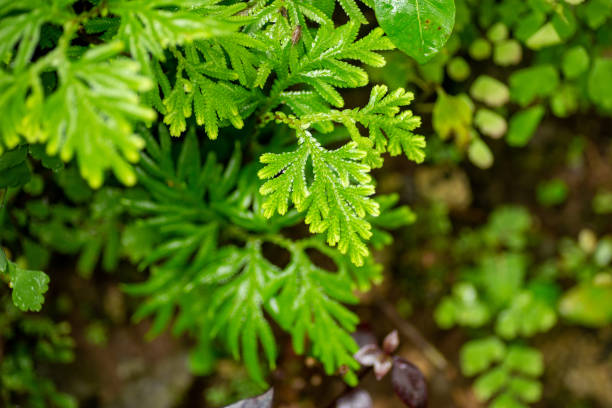
Selaginella (spike mosses) - Lycophyte lives in understory of tropical forests, sporophyte dominant, bushy has a single strand of ccascular tissue produces two size of spores, sporangia organized into strobili at the tips of the branches
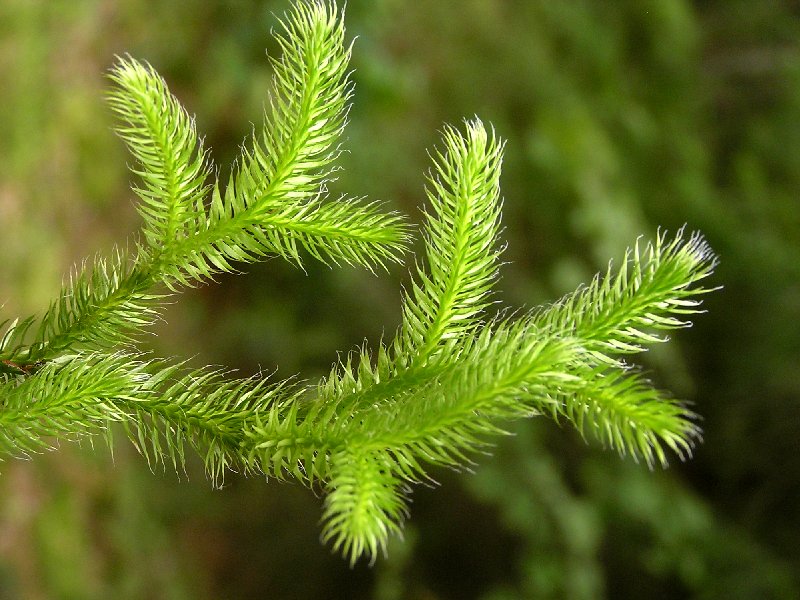
Lycopodium (Club mosses) - Lycophyte lices in acidic soils and bogs, sporophyte dominant, elongate leaves only has a single strand of vascular tissue
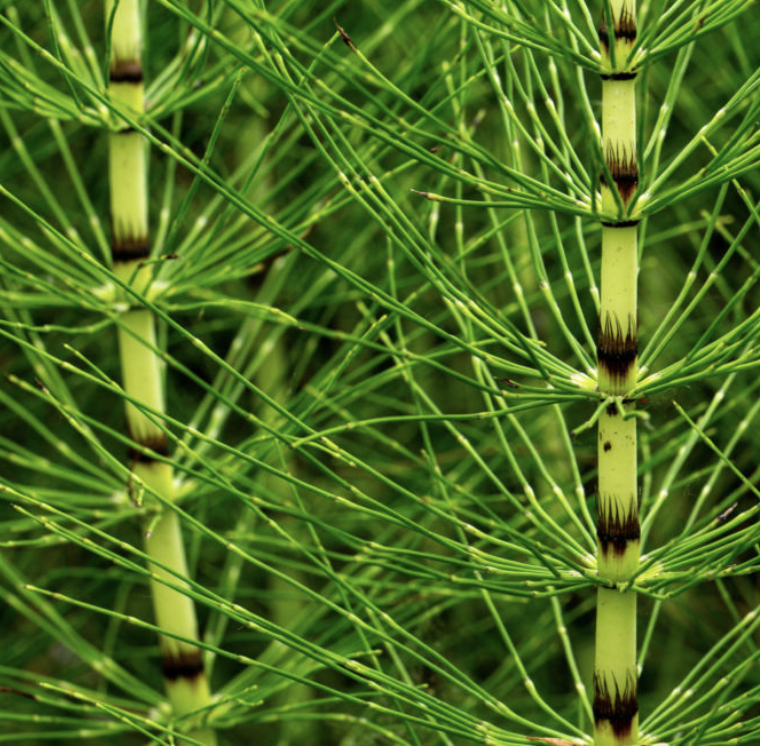
Horsetails- Monilophyte, has holloe upright stems with reduced leaves, found in wet environments
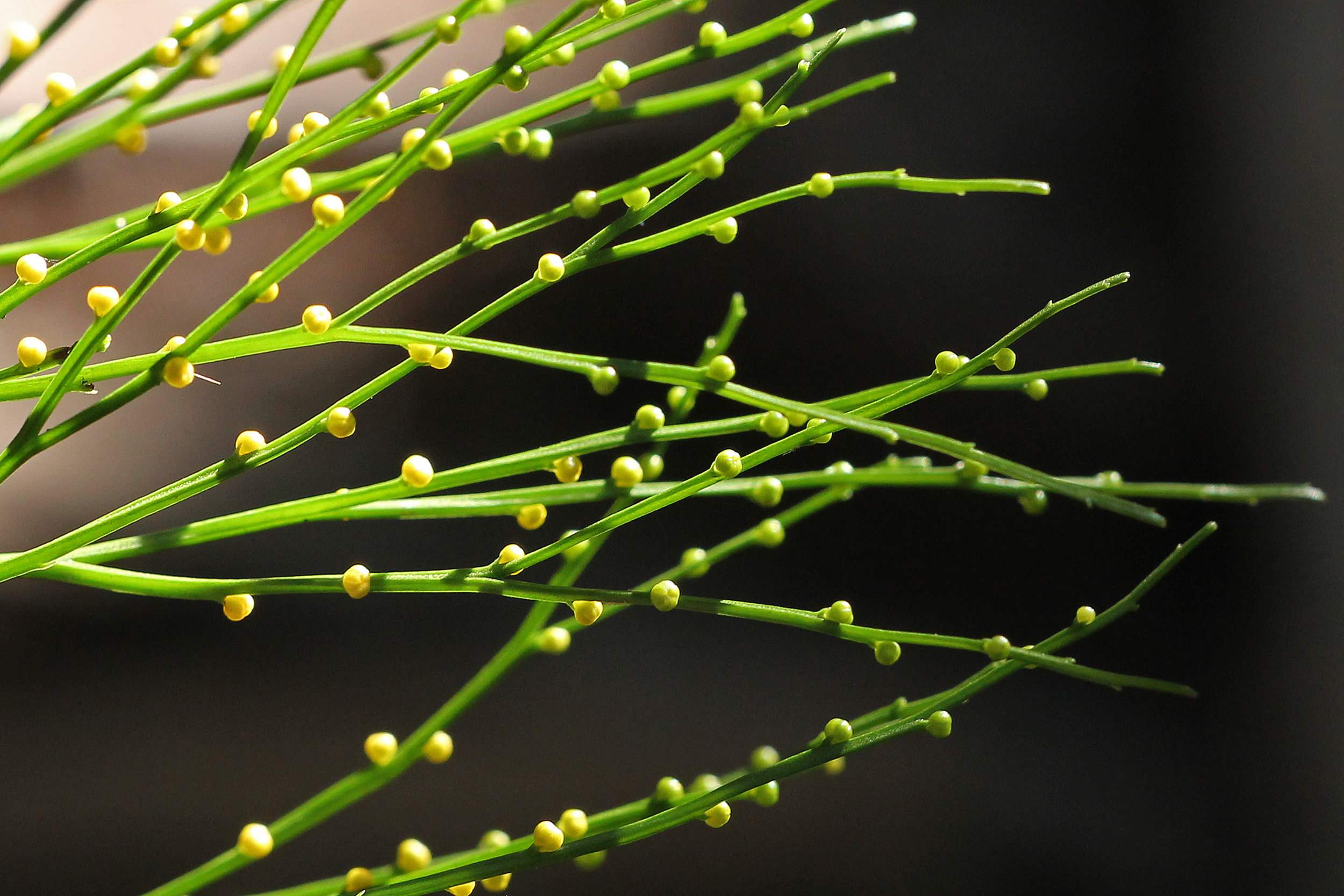
Whisk ferns- Monilophyte has dichotomous branched stems, greatly reduced leaves, yellow sporangia and no roots, epiphyte

True Ferns- largest group of monilophyte, have clusters of sporangia on their leaves called sori
Euphyllophytes
true leaf plants seed plants and monilophytes. Leaves have an extensive network of vascular tissue (megaphylls)
Seed Plants (Gymnosperms and Angiosperms)
monophyletic groups, have heterosporous alternation of generations life cycle, extreme reduction of gametophyte generation, spores aren’t primary mechanism of dispersla instead pollen delivers sperm to egg. Seeds are the next sporophyte generation enclosing the embryo that’s surrounded by nutritive tissue and seed coat
Gymnosperms
Cycads, Ginkgo, Gnetophytes, Conifers) naked seed plants, seeds aren’t surrounded by fruit
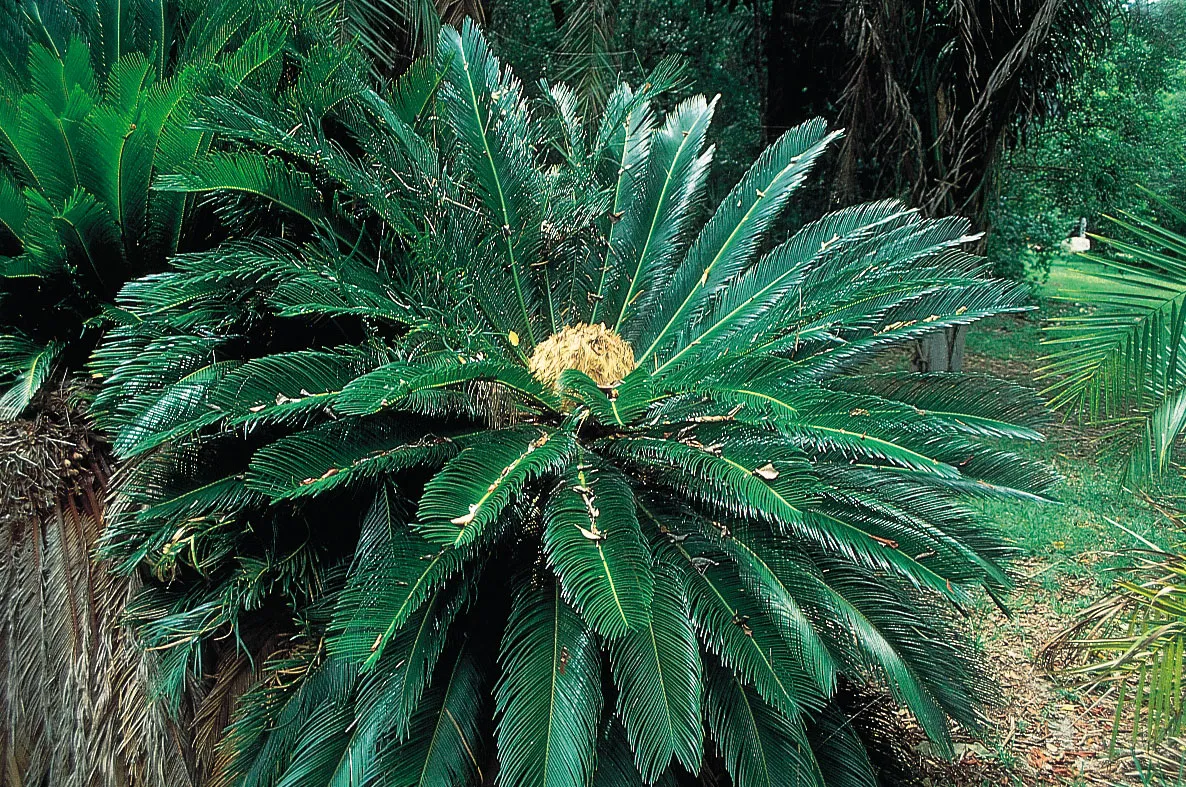
Cycads- gymnosperm, has large compound leaves, dioecius (seperate male and female plants), produce woody cones
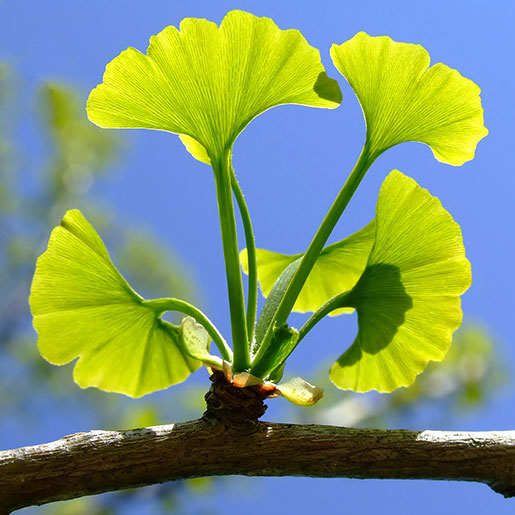
Ginkgo- Gymnosperm, leaves are distinctive, heart-shaped with two lobes, dioecious (seperate female and male plants) seeds are surrounded by fleshy stinky seed coat

Gnetophyte- Gymnosperm, have paired opposite leaves, have vessel elements in the xylem and double fertilization, unusual morphological features are homoplasy
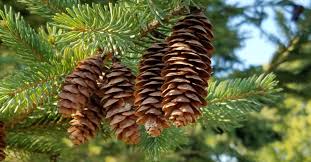
Conifer- Gymnosperm, most diverse group of gymnosperms, cones are woody
Angiosperms
flowering plants, most diverse group of plants Basal angiosperms, monocots and eudicots
Monocots
Rice, wheat, corn, oat, grass, bananas, onions orchids, bamboo, have parallel leaf veins, stems with scattered vascular bundles and single embryonic sed leaf (cotyledon)
Eudicot
fruits and vegetables (tomatoes, peppers, lettuce, apples, almonds, peanuts, carrots, have netted leaf veins, ordered vascular bundles BVC and 2 cotyledons, flowers of eudicots are arranged in fours or fives (petals)
Homosporous alternation of generations
occurs in bryophytes, most lycophytes and most monilophytes - only one size of spore is produced which grows into a single gametophyte
Distinguishing feature of angiosperm seed
endosperm which contains high levels of starch and lips providing for the seed after seed germination
Aggregate fruits
develop from a single flower that had multiple independent ovaries
Fungi
heterotrophic eukaryotes with absorptive nutrition part of a group called Opisthokonts (organisms that ancestrally had a single posterior flagellum) sister group to metazoa + choanoflagelletes (animals) cell walls that contain chitin,
Ascomycota
fungi that has a sac enclosing 8 haploid spores
Basidiomycota
fungi structure that has a club-like structure with 4 external spores
Metaoa
animals- multicellularity, heterotrophy, extracellular matrix, blastula stage in development, unique cell-junctions
Radial symmetry
cylindrical organisms that have many planes of symmetry (sea anemones)
Asymmetrical
no planes of symmetry (sea sponge)
Pentaradial Symmetry
variant of radial symmetry, 5 part (sea star)
Bilateral Symmetry
one plane of symmetry
Filter feeder
if food is seperated from water by passage through specilaized structures (clam)
Deposit feeders
extract food from sediments by removing difestible particles from soil or water column (earthworms, sea cucumbers)
2 way gut (Incomplete Gut)
only one opening, anything that can’t be digested is released through the mouth and there’s NO anus (sea anemones)
One way Gut (Complete Gut)
continuous food moves in the same direction from entrance to exit have two openings- mouth and anus (earthworm)
Gastrula Stage
two-layered stage formed by the blastula. Gut begins to develop